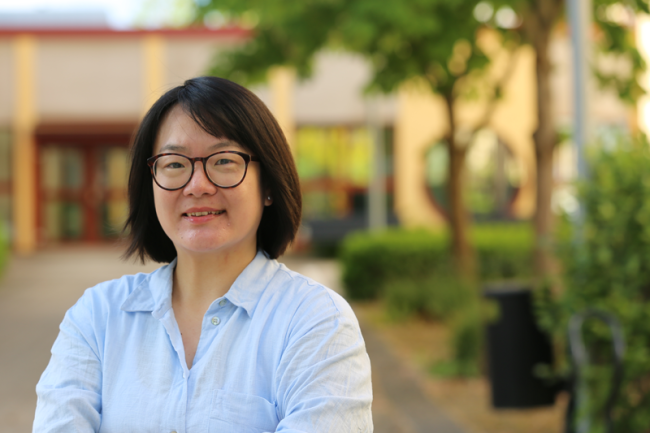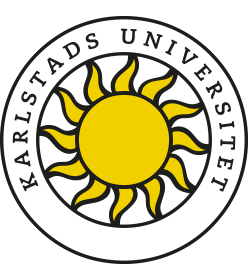Journalism Rewired: How AI Is Reshaping News in China and Beyond
2025-06-18What happens when AI meets journalism in one of the world’s most tightly controlled media environments? Joanne Kuai, newly graduated PhD in Media and Communication Studies at Karlstad University, dives into China’s AI-powered newsrooms - and what they reveal about the future of journalism everywhere.
Joanne, why did you choose Chinese journalism for your research?
– Around 2018, I began thinking deeply about the societal implications of artificial intelligence and what it means to be human in the age of AI. Journalism became my point of entry into this larger question - both because of my background as a journalist and editor, and because of the profound changes I witnessed in newsrooms transitioning from print to digital. That was also when a lot of media innovation emerged in China, including news-writing bots, AI news anchors, and algorithm-powered news recommenders. These developments raised important questions about authorship, professional identity, and the institutional future of journalism.
– At the same time, dominant discourses about Chinese media often reduce it to either propaganda or censorship. I found this framing simplistic and limiting. My professional network gave me access to journalists and technologists whose stories are more nuanced. I wanted to offer a more complex understanding of Chinese journalism - not to romanticise it, but to examine how it navigates state influence, technological innovation, and professional ideals. AI journalism in China offered a rich case for exploring these intersections.
You have compared China with the USA and the EU – what are the key differences?
– These three regions differ significantly in their political, economic, and cultural structures - especially in how they develop and govern AI. China follows a state-driven model, the US relies on market forces, and the EU adopts a values-driven regulatory approach. Each is trying to position itself as a global AI leader and norm-setter.
– Yet there are also important similarities. In all three contexts, AI has catalysed a concentration of power and resources, often to the detriment of journalism and news workers. Whether through market logic or political ambition, AI technologies like automated content and algorithmic recommendation are being used to shape public attention in ways that don't necessarily serve civil society.
– These developments compel us to ask: What does it mean to be human in the age of AI? Before designing technology that aligns with “our values,” we must first clarify what those values are - and who gets to define them.
What are the primary findings of your study?
– One of the key findings is that AI isn’t displacing journalism - it’s reinstitutionalising it. In China, AI technologies are reshaping professional roles, production processes, and media governance structures. Journalists are adapting to AI by using it to enhance efficiency and reduce political risk, but also to perform civic roles such as investigating algorithmic harm and alerting the public to technological risks.
– My study also reveals how news platforms and algorithmic infrastructures serve as tools of both innovation and control. They are embedded in state-tech-media relationships that shape what counts as news and who gets to produce it. Across China, the US, and the EU, these dynamics play out differently, but they all raise urgent questions about the future of journalism and democracy.
How do AI technologies affect the professional roles and working methods of journalists in China?
– Chinese journalists, like their Western counterparts, face pressure from platforms and digital disruption. Many adopt AI to boost efficiency - using it for transcription, archive organisation, grammar checking, and even interview prep. One distinctive use case is "content risk management," where AI helps detect politically sensitive figures or banned terms to avoid political fallout.
– Rather than changing their roles entirely, journalists use AI to fulfil their existing role orientations. Some perform civic functions - investigating tech harms or sounding alarms about new risks - while also portraying the state as a benevolent guardian. This duality aligns with a long-standing “loyal facilitator” role in Chinese journalism, blending public service with political alignment.
In what ways do algorithmic news platforms developed by Chinese tech companies reshape the economic and institutional foundations of journalism?
– In China, journalism is shaped not just by tech companies, but by a triangular power dynamic between the state, media, and tech firms. These platforms don’t operate independently - they function within state-defined boundaries, regulations, and ideological expectations.
– While there was early disruption from tech platforms, the state has since reasserted control through policy and structural integration. Media–tech partnerships now involve joint publishing and profit-sharing models, creating a collaborative - but constrained - ecosystem. This reinforces the institutional interdependence of media, technology, and the state.
How do the legal and regulatory frameworks for AI and journalism differ between China, the US, and the EU?
– These frameworks are still evolving - and reflect competing values and interests. In the US, copyright law requires human authorship, ruling out protection for AI-generated content. The EU takes a case-by-case approach based on originality. China, meanwhile, has introduced mechanisms to separate authorship and ownership, allowing tech companies to claim rights over AI-generated works without fully attributing authorship to machines.
– These differences reveal broader power dynamics. Whether it’s the state or tech companies, dominant actors are using legal tools to prioritise their interests. These risks narrowing the diversity of voices, centralising control over the information environment, and weakening the democratic function of journalism.
What power dynamics emerge between news organizations, tech companies, and the state as AI becomes integrated into journalism?
– AI intensifies existing tensions and interdependencies. In China, tech firms act as both innovation hubs and political partners, shaping infrastructure and distribution while aligning with state agendas. News organisations must adapt to platform logics while maintaining political loyalty and professional identity.
– The state remains the ultimate arbiter, regulating both technology and media. What emerges is a hybrid ecosystem where editorial decisions, algorithmic curation, and political directives co-produce the news landscape. This entangles journalistic autonomy with both technological systems and political oversight.
How can the traditional norms and values of journalism be preserved or reshaped in an era of technological and political restructuring?
– Before asking how to preserve journalistic values, we must revisit what those values actually are - and for whom. Ideals like objectivity and neutrality have often been presented as universal, but they deserve critical examination, especially as democracy itself faces strain.
In China, journalists are often explicit about their dual roles, balancing loyalty with civic responsibility. This clarity might serve as a prompt for journalists elsewhere to reflect more honestly on their role in society.
– Ultimately, sustaining meaningful journalism requires collective reflection - by journalists, regulators, technologists, and the public - on the kind of media system we want. That means reimagining regulation, reinvesting in public interest media, and recognising that quality journalism cannot be sustained without systemic support.
What impact do you hope your research will have?
– I hope to contribute to a more globally informed and critically engaged conversation about AI and journalism. My research offers new empirical data and a comparative framework that foregrounds the role of the state, law, and policy - elements often overlooked in AI and media research.
– Beyond academia, I’m also committed to public engagement. I’ve contributed to initiatives like the JournalismAI Academy, engaging in dialogues with industry practitioner, spoken at EU events, and hosted podcast to communicate research more broadly. With AI now touching many aspects of everyday life - from ChatGPT to algorithmic decision-making - I hope my work helps people reflect on what kind of technological future we want, and how we define human agency within it.
In what ways will your research strengthen Karlstad University?
– Through this work, I’ve represented Karlstad University across academic, policy, and public arenas. I’ve contributed to international journals and conferences, collaborated with colleague in NODE (News and Opinion in the Digital Era), and Geomedia. I’m also an active member in academia community service and I’m elected as the Student and Early Career Representative for the Journalism Studies Division at the International Communication Association (ICA).
– I’ve also brought Karlstad into conversations with journalists, policymakers, and the wider public - through initiatives like JournalismAI and media contributions in outlets like Sixth Tone. The supportive environment at Karlstad University has been essential to my growth as a researcher, and I hope I’ve contributed in return by helping raise the university’s visibility in cutting-edge debates on AI, media, and democracy.


